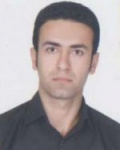| نویسندگان | حسن فاضلی نشلی,سیامک سرلک,جواد حسین زاده ساداتی,سحر یزدانی,بابک رفیعی علوی,استیسی کارولین |
|---|
| نشریه | مطالعات باستان شناسی |
|---|
| شماره صفحات | 153 |
|---|
| شماره مجلد | 14 |
|---|
| ضریب تاثیر (IF) | ثبت نشده |
|---|
| نوع مقاله | Full Paper |
|---|
| تاریخ انتشار | 2022-09-23 |
|---|
| رتبه نشریه | علمی - پژوهشی |
|---|
| نوع نشریه | الکترونیکی |
|---|
| کشور محل چاپ | ایران |
|---|
| نمایه نشریه | SCOPUS |
|---|
چکیده مقاله
The societies of the northern and southern zones of the “Iranian Central Plateau” flourished during the last quarter of fourth millennium BCE. This floruit was marked by the rise of complex social systems, long distance trade, and new systems for the management of economic activities, such as the “proto-Elamite writing system” (Vidale 2018; Helwing 2019; Fazeli Nashli and Nokandeh 2019). This evidence supports the view that the inhabitants of the Iranian Plateau during this time were connected to each other, represented by a relatively uniform writing system and similar economic organization. However, nowadays we know that the similarity of the “Grey Ware Culture” occurring in Proto-Elamite sites of the north-central Plateau such as Sofalin, Qoli Darvish, Meymanatabad and Sialk also suggests inter-regional contact, beyond the “Proto-Elamite phenomenon” during the last quarter of fourth millennium BCE. The population of the whole of the north Central Plateau appears to have dispersed during the third millennium BCE and current information suggests that most Chalcolithic settlements were gradually abandoned beginning around 3400 BCE, and that the hiatus in settled occupation continued throughout the third millennium BCE. This may be connected with climatic events during the last quarter of the fourth millennium BCE, characterized by aridity and increased aeolian activity, which destabilized the agriculture system. As Vidale postulated (Vidale et al. 2018) the social evolution of the Central Plateau, based on non-centralized networks during the Chalcolithic period and were extinguished shortly after 3000 BC but shaped again shortly which was different from the previous period. This paper will summarize the findings of these excavations and propose a chronological framework for these social and cultural changes from the late fourth to the early 1st millennia BCE. In this paper we document the intra-regional societal developments and inter-regional material culture connections that made the third and second millennia BCE such a dynamic time.
